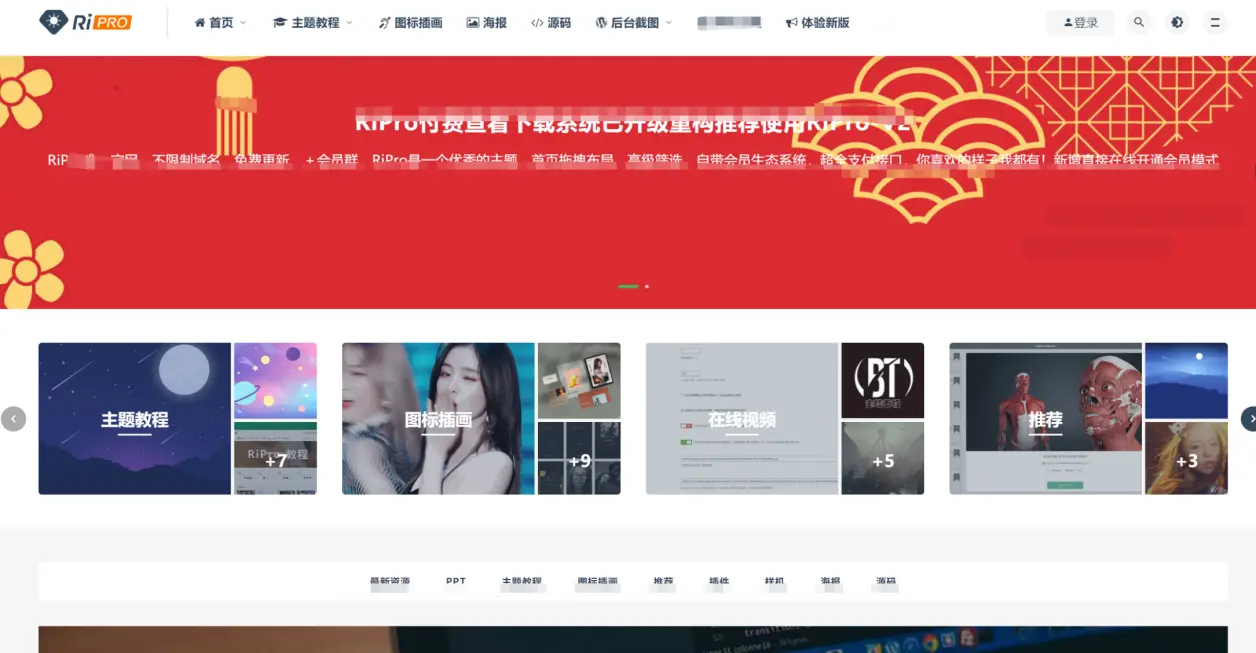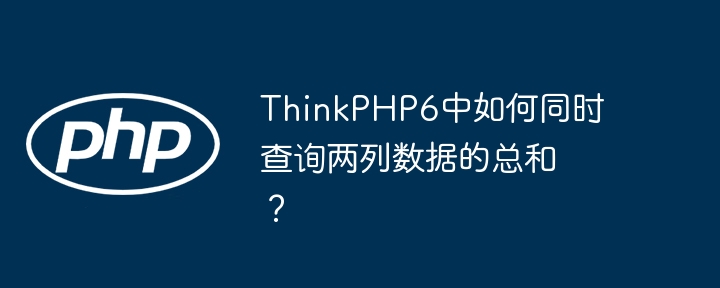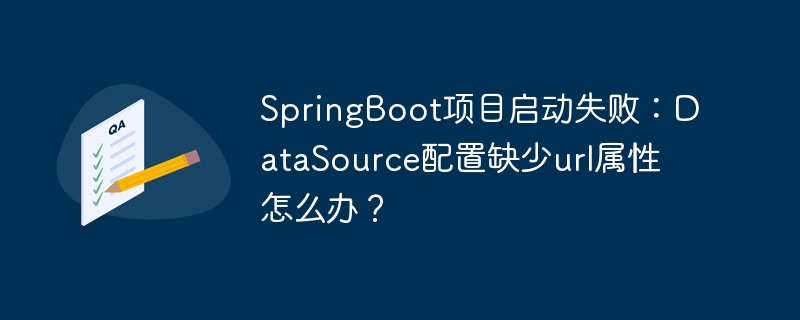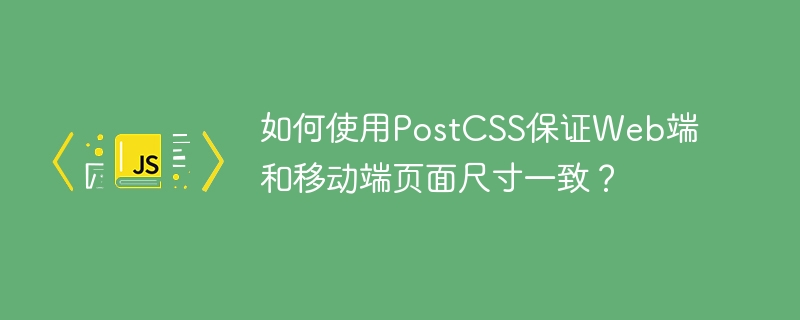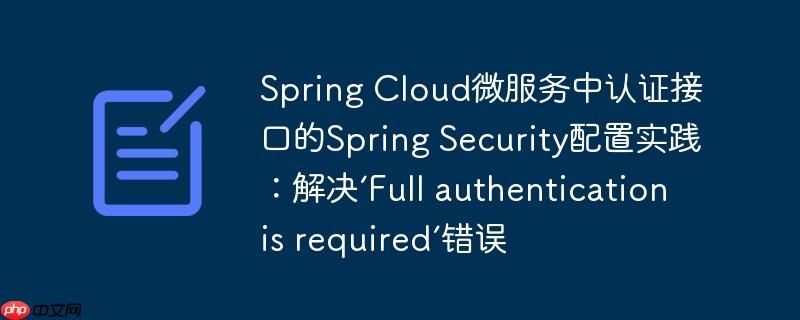
在spring Cloud微服务架构中,当认证服务(Auth Service)的注册、登录等公共接口被spring security默认保护时,会导致“Full authentication is required”错误。本文旨在提供详细的Spring Security配置指南,通过正确使用permitAll()方法允许匿名访问这些关键接口,并探讨在API网关集成场景下的问题排查,同时引入Spring Security的现代配置方式,确保服务正常运行和安全性。
1. 问题背景与错误分析
在构建基于spring cloud的微服务应用时,认证服务通常会提供用户注册(/authenticate/signup)、登录(/authenticate/login)和刷新令牌(/authenticate/refreshtoken)等接口。这些接口的特点是它们在用户尚未认证时就需要被访问。然而,spring security的默认配置是高度安全的,它会假定所有请求都需要进行身份验证。当这些公共接口没有被明确排除在安全链之外时,spring security就会抛出full authentication is required to access this Resource错误。
当请求通过API gateway转发时,如果认证服务本身拒绝了请求,API Gateway可能会返回Could not send request之类的通用错误,这通常是上游服务(认证服务)返回了非预期的响应(如401 Unauthorized)导致的,而非API Gateway本身的路由或连接问题。因此,解决核心问题在于正确配置认证服务的Spring Security。
2. Spring Security核心配置:允许匿名访问
解决此问题的关键在于告诉Spring Security,特定的认证接口不需要任何形式的身份验证即可访问。这通过在安全配置中为这些路径设置permitAll()规则来实现。
2.1 传统配置方式(基于WebSecurityConfigurerAdapter)
在Spring Security的早期版本中,通常通过继承WebSecurityConfigurerAdapter并重写configure(httpSecurity http)方法来定义安全规则。以下是针对认证接口的配置示例:
import org.springframework.context.annotation.Configuration; import org.springframework.security.config.annotation.web.builders.HttpSecurity; import org.springframework.security.config.annotation.web.configuration.EnableWebSecurity; import org.springframework.security.config.annotation.web.configuration.WebSecurityConfigurerAdapter; @Configuration @EnableWebSecurity public class SecurityConfig extends WebSecurityConfigurerAdapter { @Override protected void configure(HttpSecurity http) throws Exception { http .csrf().disable() // 禁用CSRF,通常用于无状态的REST API .authorizeRequests(auth -> { // 允许匿名访问认证相关的接口 auth.antMatchers("/authenticate/signup", "/authenticate/login", "/authenticate/refreshtoken").permitAll(); // 其他所有请求都需要认证 auth.anyRequest().authenticated(); }); // 如果需要,可以添加会话管理、异常处理等 // .sessionManagement().sessionCreationPolicy(SessionCreationPolicy.STATELESS); // .exceptionHandling().authenticationEntryPoint(jwtAuthenticationEntryPoint); } }
代码解析:
- http.csrf().disable(): 对于无状态的restful API,通常会禁用CSRF保护,因为它主要用于基于会话的Web应用。
- authorizeRequests(auth -> { … }): 这是配置授权规则的入口。
- auth.antMatchers(“/authenticate/signup”, “/authenticate/login”, “/authenticate/refreshtoken”).permitAll(): 这是核心所在。它指定了/authenticate/signup、/authenticate/login和/authenticate/refreshtoken这三个路径可以被所有用户(包括未认证用户)访问。
- auth.anyRequest().authenticated(): 这是一个兜底规则,意味着除了前面permitAll()指定的路径外,所有其他请求都必须经过身份验证。
注意事项: 规则的顺序非常重要。更具体的规则(如permitAll())应该放在更宽泛的规则(如anyRequest().authenticated())之前。如果anyRequest().authenticated()放在前面,它会优先匹配所有请求,导致permitAll()规则失效。
2.2 现代配置方式(基于SecurityFilterChain Bean)
自Spring Security 5.7.0-M2版本起,WebSecurityConfigurerAdapter被标记为废弃,推荐使用SecurityFilterChain作为Bean来配置安全。这种方式更加灵活和模块化。
import org.springframework.context.annotation.Bean; import org.springframework.context.annotation.Configuration; import org.springframework.security.config.annotation.web.builders.HttpSecurity; import org.springframework.security.config.annotation.web.configuration.EnableWebSecurity; import org.springframework.security.web.SecurityFilterChain; @Configuration @EnableWebSecurity public class SecurityConfig { @Bean public SecurityFilterChain filterChain(HttpSecurity http) throws Exception { http .csrf(csrf -> csrf.disable()) // 禁用CSRF .authorizeHttpRequests(auth -> auth // 允许匿名访问认证相关的接口 .requestMatchers("/authenticate/signup", "/authenticate/login", "/authenticate/refreshtoken").permitAll() // 其他所有请求都需要认证 .anyRequest().authenticated() ); // 如果需要,可以添加其他配置 // .sessionManagement(session -> session.sessionCreationPolicy(SessionCreationPolicy.STATELESS)); // .exceptionHandling(exceptions -> exceptions.authenticationEntryPoint(jwtAuthenticationEntryPoint)); return http.build(); } }
代码解析与优势:
- @Bean public SecurityFilterChain filterChain(HttpSecurity http): 通过定义一个返回SecurityFilterChain的Bean来配置安全链。
- csrf(csrf -> csrf.disable()): 新的Lambda表达式风格,更简洁。
- authorizeHttpRequests(auth -> auth …): 替代了旧的authorizeRequests(),推荐使用。
- requestMatchers(“/authenticate/signup”, …).permitAll(): 功能与antMatchers类似,但推荐使用requestMatchers,它支持更多匹配策略。
- http.build(): 构建并返回SecurityFilterChain实例。
这种方式更符合spring boot的习惯,并且提供了更好的可读性和可测试性。强烈建议采用此现代配置方式。
3. API Gateway集成与问题排查
当认证服务配置正确后,API Gateway通常能够顺利转发请求并获得正确的响应。如果仍然遇到Could not send request或类似错误,请检查以下几点:
- 网络连通性: 确保API Gateway能够访问到认证服务的地址和端口。
- 路由配置: 检查API Gateway的路由规则是否正确地将请求转发到认证服务的正确路径。例如:
spring: cloud: gateway: routes: - id: auth_service uri: lb://AUTH-SERVICE # 假设认证服务的服务名为AUTH-SERVICE predicates: - Path=/authenticate/** # 匹配所有以/authenticate开头的路径
- 日志分析:
- 认证服务日志: 检查认证服务的控制台或日志文件,确认是否还有Spring Security相关的错误(如401 Unauthorized)。如果错误消失,说明核心问题已解决。
- API Gateway日志: 查看API Gateway的日志,了解它在转发请求时是否遇到连接超时、目标服务不可达或响应解析错误等问题。
- CORS配置: 如果前端应用与API Gateway或认证服务不在同一域,需要正确配置CORS(跨域资源共享)。虽然“Full authentication is required”不是CORS错误,但CORS配置不当可能导致其他请求失败。
4. 总结
在Spring Cloud微服务架构中,正确配置Spring Security以允许匿名访问认证接口(如注册、登录、刷新令牌)至关重要。通过在SecurityFilterChain(或旧版中的WebSecurityConfigurerAdapter)中明确使用permitAll()方法,可以有效解决Full authentication is required to Access this resource错误。同时,在API Gateway场景下,确保认证服务本身配置无误是解决上游错误的关键。采用Spring Security的现代配置方式,不仅能解决当前问题,也使得安全配置更具可维护性和前瞻性。






